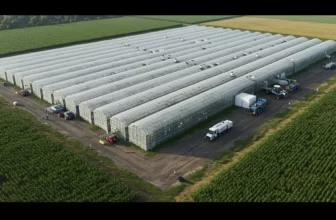The cannabis industry has experienced a whirlwind of changes in recent years, especially concerning mergers and acquisitions (M&A). Businesses in this sector have encountered a substantial shift in their strategies for growth and consolidation due to various challenges in the market. In 2024, acquisitions within the cannabis industry reached an impressive $1.169 billion, yet this represents a significant decline from previous peaks. This decrease is compelled by numerous factors that are driving firms to reevaluate their approaches amid dynamic market conditions.
A financial landscape filled with caution
One prominent trend affecting M&A activity in the cannabis world is the noticeable shift towards financial prudence. In recent years, companies have generally focused on conserving cash. Significant factors contributing to this change include shrinking margins and less favorable stock prices, which make raising capital particularly tough. Consequently, many potential deals have been either canceled or postponed as businesses prioritize internal efficiency over rapid expansion.
There was a distinct ‘gold rush’ attitude in the past, where major operators eagerly sought to establish footholds across multiple states. Now, rather than spreading operations thinly across several areas, these organizations focus on existing operations, allocating funds strategically to enhance efficiency.
Navigating an overcrowded marketplace
The initial growth phase in the industry led many companies to strive for presence in every feasible state market. However, the results frequently fell short of expectations and drove enterprises to rethink such aggressive expansion tactics. States like Massachusetts exemplify restrictive regulatory environments that limit scalability, imposing stringent limits on the number of dispensaries and production capacities. These restrictions make acquiring new ventures within such states less attractive and more challenging.
In many regions, business operations remain fragmented, resulting in what can be described as divided markets. With minimal synergy between different local operations, integrating new acquisitions becomes increasingly complex. It’s no surprise, then, that several cannabis companies are cautious about engaging in interstate transactions.
Overleveraging: A looming threat
An influential aspect shaping M&A decisions in the cannabis world is the burgeoning risk of overleveraging. Many multi-state operators (MSOs) have pushed their borrowing limits to alarming degrees. Though seller financing and additional debt may provide temporary respite for expansion, overextended debt levels create long-term vulnerabilities.
This financial strain often hinders growth opportunities, reinforcing the preference to optimize current holdings instead of pursuing ambitious acquisition plans. Companies are becoming wary of accumulating additional obligations without concrete strategies for integration and returns.
Future pathways: Craft producers versus corporate giants
Despite current obstacles, agreement remains about the necessity for future consolidation within the industry. Experts predict an hourglass-shaped market structure will begin to form, marked by dominant large corporations alongside a thriving network of small craft producers. Mid-sized entities might find it challenging to develop a sustainable niche unless they specialize or innovate significantly.
This trend indicates an evolution where smaller players emphasize quality and unique offerings while larger firms leverage economies of scale and broader distribution networks. The shifting dynamics suggest that flexibility, resilience, and adaptability will determine long-term success for both extremes in this operational spectrum.
Rethinking M&A strategies for a resilient future
A reimagined M&A strategy entails evaluating potential acquisitions with meticulous scrutiny concerning market fit and synergy potential. Prioritizing transactions that deliver genuine strategic value—regarding geographic complementarity or technological advancements—should take precedence over mere numerical growth.
Additionally, companies should explore vertical integration to improve supply chain control and minimize reliance on fluctuating external forces. By streamlining operations through thoughtful acquisitions, cannabis enterprises can nurture greater resilience and agility in adapting to market shifts.
Internal efficiencies over external expansions
For many cannabis operators, reinforcing existing market positions is proving to be a dependable strategy amid uncertainties. Incremental progress, such as advancing cultivation methods or enhancing processing efficiencies, may yield stronger returns without introducing added acquisition complexities.
This deliberate allocation of resources illustrates a clear strategic pivot. While opportunistic growth remains under consideration, it is approached judiciously to prioritize endeavors promising immediate operational improvements over risky geographic diversification strategies.
Consolidation challenges: Integration over ambition
Integrating new acquisitions involves inherent difficulties, regardless of industry specifics. Potential mismatches in culture, systems, and processes heighten risks. Having a comprehensive plan for merging diverse operational models strengthens acquirers’ capacity to realize intended acquisition benefits seamlessly.
Understanding that integration carries comparable burdens to initial deal-making emphasizes why pragmatic M&A strategies grounded in realism—rather than sheer optimism—are essential. Strategic foresight ensures preparedness for navigating post-acquisition landscapes effectively.
With varying economic indicators signaling numerous headwinds but also opportunities for realignment, parties engaged proactively while being mindful of evolving demands position themselves advantageously compared to inert counterparts unwilling to adapt strategically.





